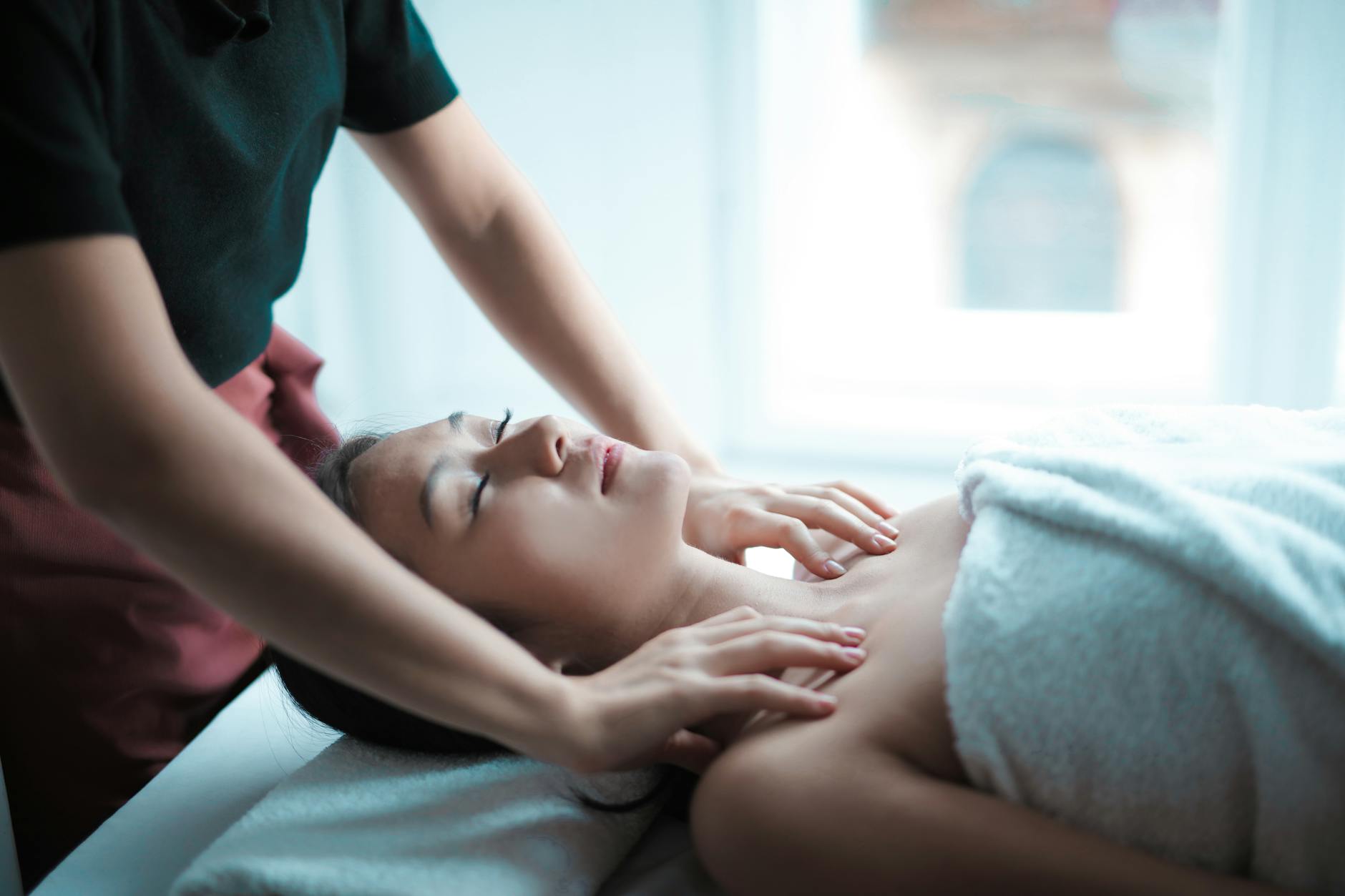Cupping therapy is gaining popularity across the US. From professional athletes to everyday Aussies looking for natural relief, more people are turning to this traditional technique to ease pain, reduce tension, and support recovery. You can now even enjoy a cupping massage in the comfort of your home with services like Blys.
Even with its long history, many still wonder whether cupping actually works. That question is becoming more common, especially as more people look for treatments that are both natural and backed by science.
This guide explores the latest cupping therapy studies and what they reveal. We’ll look at how cupping may help with different conditions, what the research says about its effectiveness, and where the evidence is still unclear. Whether you’re curious or already a fan, this blog will give you a clearer picture of the science behind cupping therapy.
Quick Overview: Cupping Therapy
Cupping therapy is a form of manual therapy that involves placing specially designed cups on the skin to create suction. This suction generates negative pressure, which gently lifts the skin and underlying tissue.
The process is believed to increase local circulation, promote lymphatic drainage, loosen tight muscles, and support the body’s natural healing response. It can also help reduce inflammation in targeted areas.
The technique has been used for centuries in traditional Chinese, Middle Eastern, and Eastern European medicine. But today, cupping is making its way into modern wellness routines across the US.
From athletes looking for quicker muscle recovery to office workers trying to relieve back or neck tension, cupping is being embraced by a wide range of people seeking natural, non-invasive options.
Thanks to mobile wellness services like Blys, it’s easier than ever to access cupping therapy in a clean, safe, and professional setting right at home. Blys offers in-home cupping massage sessions carried out by qualified therapists who understand how to tailor each treatment to your comfort level and wellness goals.
There are several types of cupping therapy used today, each with its own method and purpose:
- Dry cupping: This is the most common type. Cups are applied to the skin using suction only, with no incisions or bleeding. It is often used to relieve muscle tightness, improve blood flow, and reduce general discomfort.
- Wet cupping (Hijama): This method combines suction with small, controlled incisions to release a small amount of blood. It is believed in some traditions to help remove toxins, but it must be performed by trained professionals due to the use of sharps.
- Fire cupping: A traditional method where heat is used to create suction. A flame is briefly placed inside a glass cup to remove the oxygen before placing it on the skin. This method requires more caution and is less commonly used in modern practice.
- Silicone or pump-action cupping: A more modern and gentler option that uses flexible silicone cups or a hand pump to control the amount of suction. This is ideal for people with sensitive skin or those trying cupping for the first time.
Most cupping sessions leave behind temporary circular marks, which are not bruises but rather the result of stagnant blood and fluids being pulled toward the surface. These marks usually fade within a few days.
Whether you’re looking for pain relief, faster recovery, or simply a new way to support your wellbeing, cupping therapy offers a flexible and low-risk option when done by qualified professionals.
New to cupping? Our first cupping therapy session guide walks you through everything you need to know before you book.
What the Research Says: Evidence for Common Conditions
While cupping therapy has long been practiced in traditional healing systems, modern science has only recently begun to explore its real-world impact. As demand grows for natural alternatives to pain relief and recovery, more clinical studies are being conducted to measure cupping’s effectiveness.
Here’s a look at some of the most promising evidence to date, focusing on key health areas where cupping is commonly used.
Chronic Pain and Musculoskeletal Issues
Chronic pain is one of the most common reasons people seek out cupping therapy, particularly for conditions like lower back pain, neck stiffness, and shoulder tension. A 2017 systematic review analyzed multiple trials and found that cupping significantly improved pain levels and physical function in patients with chronic lower back pain.
Another earlier meta-analysis in PLOS reviewed 135 studies and concluded that cupping therapy was more effective than conventional treatments in relieving neck pain, particularly when paired with acupuncture or standard physiotherapy.
These benefits are largely attributed to cupping’s ability to stimulate local blood flow, relax the fascia, and reduce tension in trigger points, which are tight areas within muscles that can refer pain elsewhere. When performed by a trained professional, cupping may help loosen these knots, ease stiffness, and support ongoing mobility.
Sports Recovery and Muscle Health
Cupping therapy has become increasingly popular among athletes as a recovery tool, thanks to its ability to reduce post-exercise soreness and promote faster muscle relaxation. In a 2020 review published in Evidence-Based Complementary and Alternative Medicine, researchers found cupping to be moderately effective in improving muscle flexibility, reducing DOMS (Delayed Onset Muscle Soreness), and enhancing physical performance perception among athletes.
Another study examined the use of dynamic cupping on collegiate athletes and found that it significantly improved hamstring flexibility and reduced muscle stiffness in just one session.
These findings support what many Blys clients already experience cupping as a valuable part of their active recovery routine, whether after high-intensity training, long-distance running, or physical labor. When done correctly, it may help reduce fatigue, prevent injury, and enhance overall mobility without needing harsh interventions.
Migraine and Headache Relief
Migraines and chronic tension headaches affect millions of Americans, and cupping therapy may offer some relief. A randomized controlled trial published in PLOS One examined the impact of wet cupping on patients with chronic tension-type headaches. The study showed a significant reduction in the number and intensity of headache episodes over a four-week treatment period compared to those receiving standard care.
Although research is still limited and more large-scale trials are needed, the early evidence suggests that cupping may improve blood flow to the head and neck area, reduce muscle tension around the scalp, and trigger a calming parasympathetic response in the nervous system.
For those seeking drug-free headache relief, cupping may be a useful tool as part of a broader pain management plan, especially under the care of a trained and experienced therapist.
Skin and Circulation Benefits
Beyond pain and muscle recovery, cupping therapy is also believed to offer aesthetic and circulatory benefits, making it a popular option for those looking to support skin health and tissue regeneration.
A 2023 review on the mechanobiology of cupping therapy found that the mechanical suction applied during cupping can stimulate fibroblasts, increase collagen production, and improve microcirculation in the treated area. These cellular changes may support better skin elasticity, enhanced healing, and improved overall appearance.
Complementing this, a study from the Journal of Acupuncture and Meridian Studies concluded that cupping significantly increased peripheral blood flow, oxygen delivery, and local metabolic activity. This helps explain why some clients report improvements in skin texture and tone following repeated sessions.
Looking to support your skin and circulation naturally? Book a cupping massage with a trusted Blys therapist and enjoy a safe, personalized treatment without leaving your home.
What Critics Say: Limitations in the Evidence
Although many cupping therapy studies show promising results, the scientific community has raised valid concerns about the strength and consistency of the available evidence. While some users experience noticeable benefits, several limitations need to be addressed before cupping can be widely recommended in clinical guidelines.
Here are some of the key limitations researchers have identified:
Lack of large-scale double-blind trials
Most studies on cupping therapy involve small participant groups. Double-blind, randomized controlled trials the gold standard in medical research are rare in this field, making it harder to draw firm conclusions.
Difficulty ruling out the placebo effect
Since cupping creates a very noticeable physical sensation and visible marks, it’s hard to blind participants. This means the positive outcomes in some cases may be influenced by patient expectations or the therapeutic setting rather than the treatment itself.
Inconsistency in cupping techniques
There’s no single standard for how cupping should be done. Variables such as suction strength, cup material, treatment duration, number of sessions, and even practitioner technique vary across studies. This makes it difficult to compare results or replicate findings.
Mixed quality of studies
Some studies lack peer review or use unclear outcome measures. A review in BMJ Open emphasized the need for better-designed trials with stronger methodologies and clearer reporting.
Despite these challenges, cupping is generally considered low-risk when done by a trained therapist, with minimal side effects and high client satisfaction. That’s why many people continue to include it in their wellness routine, not as a replacement for medical care, but as a supportive therapy that may offer relief and relaxation.
Curious how cupping can support skin tone, elasticity, and circulation? Check out our cupping therapy for skin health guide for a deeper look.
Is Cupping Safe? What You Need to Know
Cupping therapy is generally considered safe when performed by trained professionals who understand the proper techniques, hygiene standards, and individual health considerations. At Blys, all therapists are vetted and qualified, ensuring your session is both comfortable and safe in the privacy of your home.
Like any physical therapy, cupping comes with some minor, short-term side effects, which are usually harmless and resolve quickly. These may include:
- Circular marks or discolouration: on the skin, which typically fade within a few days
- Mild tenderness or tightness: in the treated area
- Temporary bruising: especially after deeper suction treatments
While these effects are normal, cupping may not be suitable for everyone. It’s important to let your therapist know about any existing medical conditions. The following are common contraindications where cupping should be avoided or adjusted:
- Broken, irritated, or infected skin
- Bleeding or clotting disorders
- Recent surgery or open wounds in the area to be treated
- Pregnancy especially in the abdominal or lower back area, unless cleared by a medical professional
- Use of blood thinners or other medications that increase bruising risk
If you’re new to cupping, you might also want to read our full guide to help you prepare. Learn what to expect, how to get the most out of your session, and how to care for your skin afterwards.
With proper care and a trained therapist, cupping can be a gentle, low-risk addition to your wellness routine that supports both physical relief and mental relaxation.
Why Aussies Are Turning to Modern Cupping with Blys
Across in the US, more people are choosing in-home wellness services to fit their busy lifestyles and cupping therapy is no exception. Rather than navigating traffic, waiting rooms, or crowded clinics, Aussies are embracing the ease of booking mobile therapists who bring professional care right to their door.
With Blys, clients receive safe, high-quality cupping therapy delivered by fully qualified and insured practitioners. Each therapist is trained to tailor treatments based on your body’s needs, ensuring you enjoy all the benefits of traditional cupping in a modern, relaxed setting.
What makes Blys a trusted choice for so many?
- Same-day bookings: available across major cities
- Flexible appointment times: including evenings and weekends
- Personalised care: with all tools and equipment brought to you
- Private and comfortable: experience in your own space
- Therapists are fully vetted: experienced, and highly rated by clients
Whether you’re recovering from a workout, managing stress, or just want to feel better in your body, mobile cupping therapy lets you take control of your wellbeing without the clinic visit.
Curious to try cupping? Book your at-home session with Blys and feel the difference modern therapy can make.
Does Cupping Really Work?
Scientific research into cupping therapy is still growing, but the existing evidence shows promising results in several key areas especially for pain relief, improved circulation, muscle recovery, and even skin health. While not every study offers conclusive proof, many show that cupping can offer real benefits when used appropriately and consistently.
It’s important to understand that cupping is not a cure-all. It won’t replace medical treatment for serious conditions, and results may vary depending on your health, lifestyle, and the quality of the therapy you receive. However, as part of a broader self-care routine, cupping can be a safe and supportive tool for managing tension, discomfort, and everyday physical stress.
If you’re considering cupping therapy, the best approach is to make an informed decision based on reliable research, personal comfort, and professional care. With mobile services like Blys, accessing high-quality treatment has never been easier.
Whether you’re trying it for the first time or adding it to your regular wellness plan, cupping could be the missing piece in your journey to feeling better, naturally.






